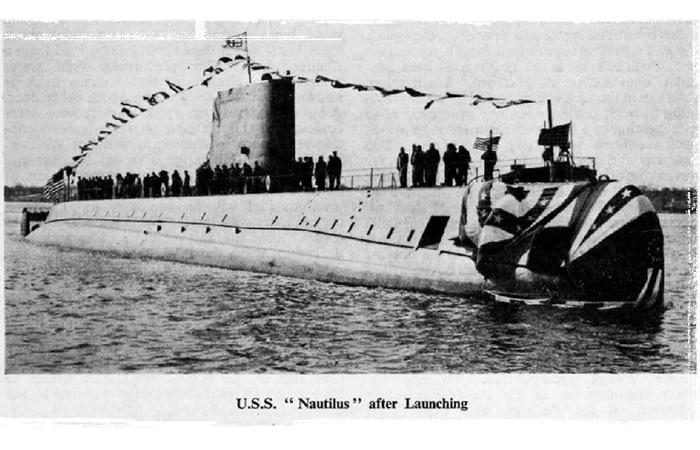April 1954: The world's first nuclear submarine
Spring of 1954 saw The Engineer reporting on USS Nautilus, the world’s first nuclear submarine, a pioneering piece of engineering.

Spring of 1954 saw The Engineer’s American Correspondent reporting on the work of the US Atomic Energy Commission. With the Atomic Age well and truly under way, there was no shortage of news to fill the column inches, including the progress of plants at Savannah River, Paducah and Oak Ridge. But, nearly 65 years on, it’s the report on the USS Nautilus that stands out.
Authorised by Congress three years previously, Nautilus was the world’s first nuclear-powered submarine, a pioneering piece of engineering that heralded a new era of military strategy and geopolitics. Its reactor had been even longer in the planning, with Westinghouse Electric Corporation instructed to develop a nuclear power plant for a submarine as far back as 1947. The result was the Submarine Thermal Reactor (STR, later redesignated the S2W), a pressurised water reactor that delivered 13,400hp (10,000kW) of power.
“A number of early American reactors were water cooled,” The Engineer wrote, “and this technology was advanced considerably more by the recent work of Westinghouse on the Submarine Thermal Reactor and on the cancelled large ship reactor project at Bettis Field.”
Register now to continue reading
Thanks for visiting The Engineer. You’ve now reached your monthly limit of premium content. Register for free to unlock unlimited access to all of our premium content, as well as the latest technology news, industry opinion and special reports.
Benefits of registering
-
In-depth insights and coverage of key emerging trends
-
Unrestricted access to special reports throughout the year
-
Daily technology news delivered straight to your inbox











Water Sector Talent Exodus Could Cripple The Sector
Maybe if things are essential for the running of a country and we want to pay a fair price we should be running these utilities on a not for profit...